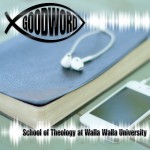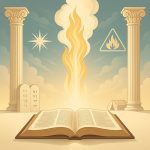| Host: | Douglas Clark |
|---|---|
| Guests: | Alden Thompson and Zdravko Stefanovic |
| Quarter: | Book of Amos |
| Lesson: | 12 |
| Sabbath: | December 22nd, 2001 |
Background and Literary Considerations
- Having come now to the last of the five vision reports, we need to ask how they connect with each other and the impact of the whole collection. What is the message of each? What kind of progression do we see? How does hope take shape or lose it? What is Amos trying to communicate about the depth of Israel’s guilt and any hope for a future with God? How far has the prophet gone?
- locusts called but canceled because of Amos’ plea for forgiveness and God’s mercy
- fire arranged but canceled because of Amos’ plea to stop and God’s mercy
- plumb line evaluating the wall of Israel, resulting in God’s not passing by again
- basket of summer fruit, showing rottenness and an end, resulting in God’s not passing by again 5-shattered temple, marking a total end for everyone
- In several places, especially chapter 9, Amos utilizes “all-ness” language, the stark totality of “all” and “none.” Is this for rhetorical effect (after all, who would then be around to benefit from the prophet’s message?!)? Does the prophet really mean all of the people will be destroyed in this chapter, that there is absolutely no escape? There is nothing in the text to suggest only evil individuals who have oppressed the poor are going to get it. Or is there something else to it?
- Is it possible that the Old Testament’s sense of “corporate responsibility” is at play here, in which guilt, shame or honor covers the entire community? Modern western individualism is a later invention and colors the way we read the Old Testament. Maybe this can help us understand Amos’ language, that because of the crimes of the elite of Israel, the entire nation bears the punishment.
Relevant Biblical Passages
- Amos 9:1-4 (Vision Report #5) – The last of the five vision reports is destructive, final, total and devastating. Not only do the capitals of the temple collapse on the heads of the people worshiping there, according to verse 1b (the last half–a remnant passage), even those who are left will fall: “not one of them shall escape.” Then, as if we needed to hear it again, the prophet adds three verses about unsuccessful attempts to escape–digging down to Sheol, scrambling up to the sky, hiding in mountain getaways, diving into ocean depths, “escaping” into captivity. Nothing works, nothing. Is this passage simply an announcement of the inevitable or, in some strange way known better to the ancients than to us, still a call to turn away from social injustice and idolatry? Or, is the prophet really speaking to the poor and oppressed, saying that there will be an end to the injustices they have been experiencing? If the latter, why the “allness” language?
- Amos 9:5-6 (Hymn #3) – These verses represent the last of the hymn fragments in the book (see 4:13 and 5:8-9) and maintain the pattern of using the form of a celebrative hymn to focus in on destructive power. Melting and mourning characterize the song. So does a reversal of creation in which the chaotic waters of the sea, which receded at the creation of the dry land in Genesis 1, now return to cover the land, making it as dangerous as the untamed ocean.
- Amos 9:7-8a – There is also a dilution of the exodus theology of Israel. God also raised up and brought out the Syrians and the Philistines, long-time hated enemies of Israel–a low blow! The first half of verse 8 sums things up: “I will destroy [the sinful kingdom] from the surface of the ground.” Is this good news or bad? To whom–the oppressing elite, the oppressed populace?
Contributions to Study of Amos and the Bible
- Amos has some extremely strong language in the face of social injustice, a healthy dose of it in this chapter. What impact did the prophet intend for his words? Announcement? Warning? Release for the oppressed?
Lessons for Life
- While not a manual on gracious witnessing, this chapter is in the Bible for a reason. What might that be in a practical sense? What should we take from these words of Amos?





